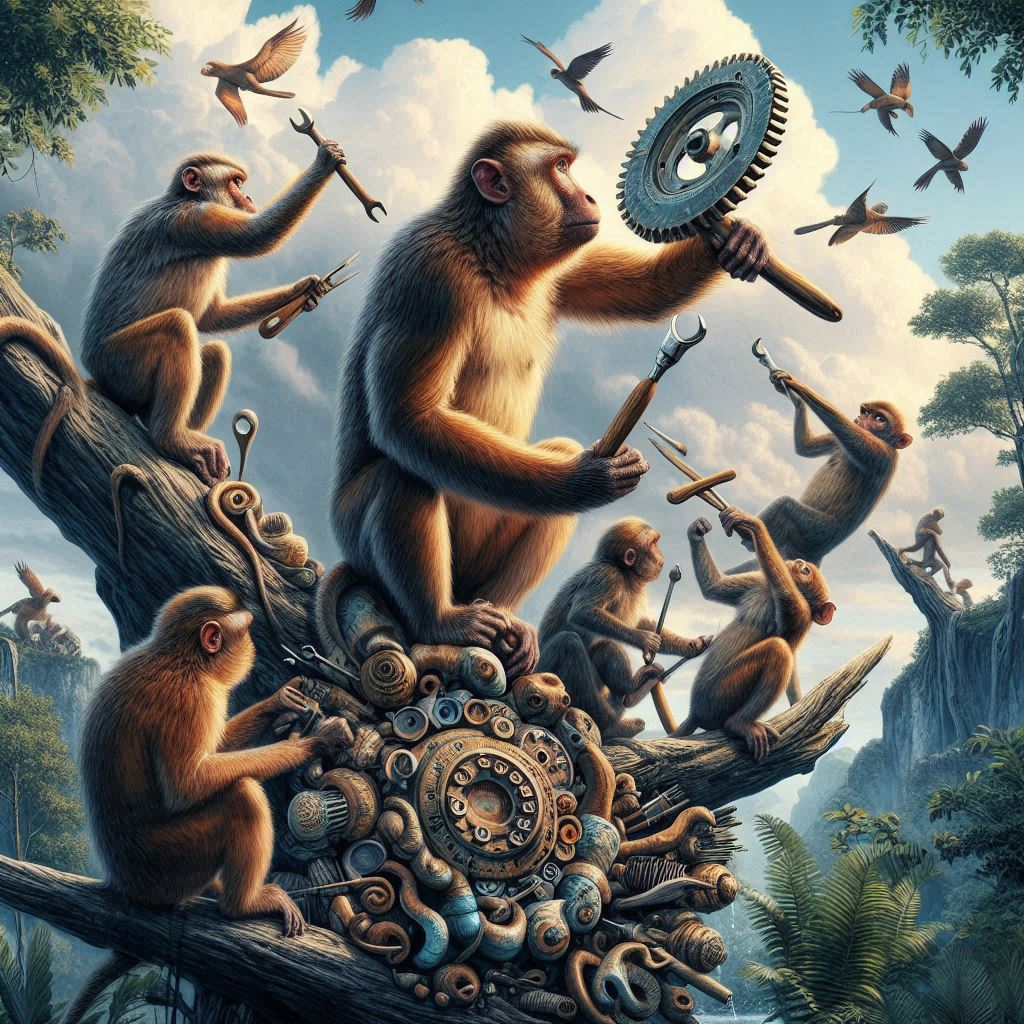
Tool Time: How Monkeys Use Tools in the Wild
Share
Tool Time: How Monkeys Use Tools in the Wild
When opposable thumbs meet raw survival instinct—and a little ingenuity.
Think humans cornered the market on clever? Think again. While we were busy building IKEA furniture with allen wrenches, monkeys were already crafting nature’s toolkits—no instruction manual required. Across continents and species, monkeys have been caught using tools with skill, patience, and sometimes surprising innovation.
🧰 The Monkey Toolbox
Let’s break down the “hardware” monkeys are known to wield in the wild:
🔨 Stone Tools
Capuchins in Brazil have been filmed:
-
Using rocks as hammers and anvils to crack open nuts
-
Selecting stones based on weight, size, and material for specific jobs
-
Leaving behind what scientists are calling “prehistoric monkey toolkits”
Some archaeologists even study these sites as non-human archaeological zones—a first in the field.
🪵 Sticks, Twigs & Probes
Long-tailed macaques, baboons, and vervets often use:
-
Twigs to extract insects or seeds from crevices
-
Grass stems to fish for termites, similar to chimpanzee behavior
-
Toothpick-like tools for cleaning teeth (yes, monkey dental hygiene is a thing)
They don’t just pick any stick—they customize lengths, strip leaves, and fashion points. That’s DIY evolution.
🥥 Coconut-Cracking Strategies
In some coastal regions, monkeys:
-
Drop coconuts from trees or cliffs to break them open
-
Use sharp rocks or coral to pry into tough shells
-
Even rinse food in water before eating—a sign of cleanliness or texture preference
That’s not just food prep. That’s culinary consciousness.
🧠 Learning & Passing It On
Tool use isn’t just instinct—it’s learned and sometimes culturally passed down:
-
Young monkeys watch adults and imitate behaviors over time
-
Different groups use different tools based on available resources and traditions
-
Some monkeys show clear trial-and-error learning when experimenting
In other words: one troop’s toolkit isn’t always another’s. That’s localized innovation, baby.
🦴 Not Just Survival—Also Style
Some monkeys even use tools for grooming, play, or display:
-
Rhesus macaques have used rocks to rub or scratch themselves
-
Others have been spotted using objects to attract mates or intimidate rivals
-
There’s even evidence of monkeys engaging in “play” tool use—just for fun or experimentation
Because what’s intelligence without a little flair?
🛠️ Evolutionary Implications
Monkey tool use challenges outdated ideas that only humans or great apes are toolmakers.
-
It supports the idea that intelligence is a spectrum, not a switch
-
It shows that resourcefulness isn’t uniquely human
-
And it forces us to reconsider the cognitive boundaries between species
Basically: give a monkey a rock, and he might just change how we define culture.
🧰 Final Nutshell
From cracking cashews to flossing with grass, monkeys remind us that ingenuity is in the genes. Their tools may be rough, but their thinking is sharp—and in the jungle, that’s what keeps them alive.
